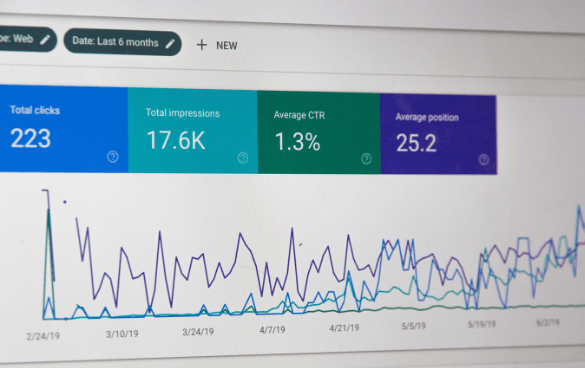Maximize Your ROI With Remarketing in Google Analytics
By using the power of customer information and tailoring ads to certain audience sectors, companies can substantially amplify their conversion rates. The journey to maximizing ROI via remarketing is a nuanced course paved with insights and chances that can reshape the trajectory of your advertising undertakings.
Recognizing Remarketing in Google Analytics
Understanding remarketing in Google Analytics is important for optimizing your electronic marketing approach. Remarketing enables you to target individuals that have previously visited your web site or communicated with your app, offering them with customized ads as they search various other sites or use various other apps within the Google Display Network. This method assists maintain your brand name top of mind and motivates individuals to go back to your site, eventually increasing the probability of conversion.
By utilizing Google Analytics, you can track the efficiency of your remarketing projects, getting beneficial understandings right into customer habits, involvement, and conversions. This information allows you to refine your messaging, bidding, and targeting techniques to enhance the general efficiency of your campaigns.
Moreover, understanding the various types of remarketing checklists available in Google Analytics, such as typical, vibrant, and comparable audiences, allows you to develop extremely fractional and tailored projects tailored to details individual segments. This degree of granularity can dramatically improve the importance and impact of your remarketing efforts, ultimately optimizing your return on investment.
Establishing Up Remarketing Checklists
To efficiently apply remarketing projects in Google Analytics, the initial action entails configuring and producing remarketing checklists targeting certain individual segments based on their communications with your site or app. By establishing remarketing listings, you can tailor your advertising initiatives to reach users that have currently revealed rate of interest in your service or products.
To start, browse to the Admin section of your Google Analytics account and pick the Property where you wish to create the remarketing listing. After that, under the Building column, click 'Target market Definitions' and select 'Target markets.' Next, click the red 'New Target market' switch and pick 'Develop New' to define the criteria for your remarketing checklist.

Crafting Efficient Remarketing Ads

When crafting your advertisements, concentrate on creating attention-grabbing headings and engaging visuals that attract attention to prospective consumers. Include strong calls-to-action that motivate users to review your site and finish a preferred activity. Make use of dynamic remarketing to reveal customized advertisements including services or products that individuals have formerly viewed on your site.
In addition, make sure that your ads are mobile-friendly because a significant portion Get More Information of net traffic comes from mobile devices. Test various advertisement variations to recognize which messages and designs drive the most effective outcomes. By constantly refining and maximizing your remarketing ads based on efficiency information, you can maximize their efficiency and enhance your return on investment.
Studying Remarketing Efficiency

With Google Analytics, online marketers can track the performance of their remarketing campaigns in real-time, permitting them to determine trends, patterns, and areas for improvement without delay. By analyzing the information, marketing professionals can establish which advertisements are carrying out well, which audience segments are reacting favorably, and which channels are driving one of the most conversions. This level of granularity enables online marketers to make data-driven decisions to optimize their remarketing campaigns for much better outcomes.
Enhancing ROI With Remarketing
Evaluating remarketing data in Google Analytics allows online marketers to pinpoint opportunities for maximizing return on financial investment (ROI) with tactical changes - What Is “Remarketing” In Google Analytics?. To take full advantage of ROI with browse this site remarketing, it is crucial to comprehend the behavior of your target market. By examining individual interactions, such as the pages they visited, the items they checked out, or the actions they took on your website, you can customize your remarketing projects better
Segmenting your target market based on their actions allows you to develop tailored and targeted advertisements that are more probable to resonate with them. By showing pertinent advertisements to particular sectors of your audience, you can boost the opportunities of conversion and ultimately boost your ROI.
Furthermore, testing various ad creatives, messaging, and offers can assist identify what reverberates best with your target market. A/B testing enables you to try out various elements of your advertisements to identify what drives the highest engagement and conversion rates.
Conclusion
To conclude, making the most of ROI with remarketing in Google Analytics needs a calculated technique to examining user actions, segmenting target markets, creating tailored advertisements, and maximizing campaign efficiency. By leveraging data-driven understandings and examining different strategies, businesses can improve their remarketing initiatives to drive greater engagement and conversion prices. This methodical method makes certain that sources are successfully assigned in the direction of maximizing returns on financial investment in remarketing campaigns.
Next, click on the red 'New Target market' switch and pick 'Produce New' to define the specifications for your remarketing list.
By continuously refining and enhancing your remarketing advertisements based on efficiency information, you investigate this site can maximize their efficiency and improve your return on investment.
By delving into these understandings, marketing professionals can gain an extensive understanding of just how their remarketing efforts are reverberating with their target audience and driving conversions. To optimize ROI with remarketing, it is crucial to comprehend the actions of your audience.In verdict, optimizing ROI with remarketing in Google Analytics needs a calculated strategy to evaluating user actions, segmenting audiences, producing tailored ads, and optimizing project efficiency.
Comments on “Exactly How to Leverage Remarketing In Google Analytics for Your Business”